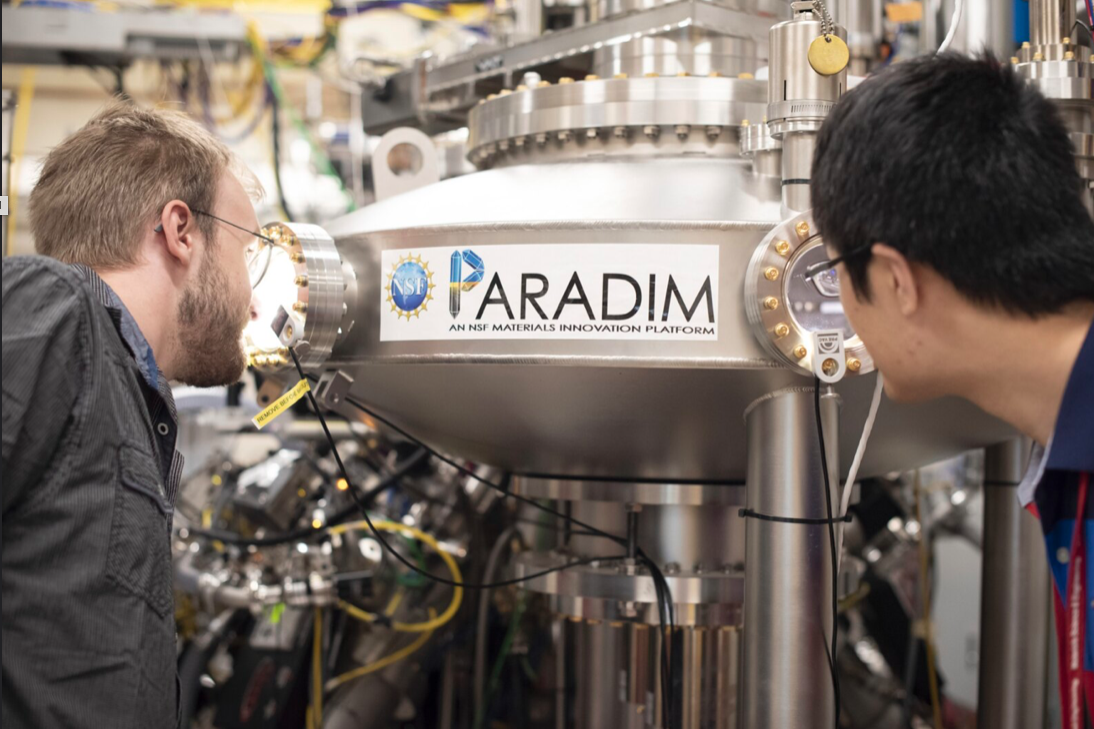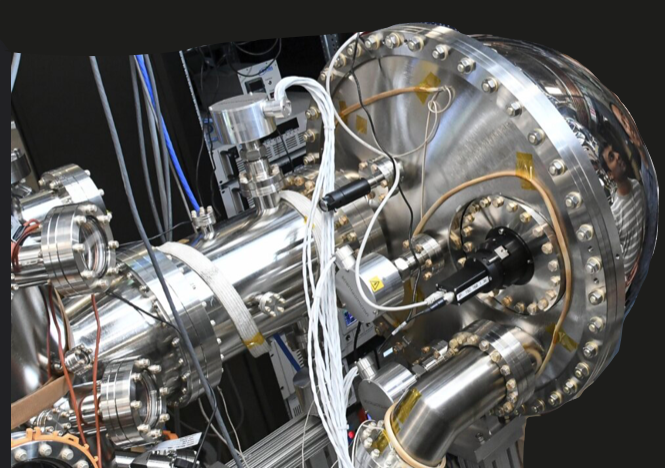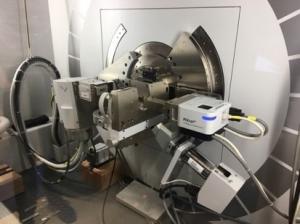
Thin Film Growth Facility
at Cornell University
The PARADIM Thin Film Growth Facility is located at Cornell University. Together with the bulk crystal film growth facilities at Johns Hopkins, it provides unprecedented capabilities for discovery of new materials and interfaces.
The PARADIM Thin Film Growth Facility at Cornell provides unprecedented capability for the growth and characterization of thin films and interfaces of inorganic materials. The signature tool is an integrated instrument consisting of an oxide MBE system and an ARPES system sharing a common ultrahigh vacuum connection. The (MO)MBE system has eleven sources that can be used simultaneously and changed/refilled without breaking growth chamber vacuum. Materials can be selected from any of the sixty-two different elements shown in color on the periodic table to the right. This gives PARADIM users unprecedented flexibility in exploring new materials by design.
Capabilities and Highlights
Thin Film New Capabilities

Novel Material Epitaxy
PARADIM enables the successful realization of novel materials

Integrated ARPES
PARADIM's Spin ARPES capability enables direct visualization of the spin texture of electronic states in momentum space for quantum materials grown by MBE.
Thin Film Growth Facility
Thin Film Growth Team

Dr. Matthew Barone
Dr. Matthew Barone serves as the PARADIM Research Scientist for Molecular Beam Epitaxy.

Dr. Brendan Faeth
Dr. Brendan Faeth serves as the PARADIM Research Scientist for Angle-resolved photoemission spectroscopy. Dr. Faeth specializes in novel characterization of thin films.

Dr. Jie Shan
PARADIM's Thin Film Facility is led by Dr. Jie Shan. Dr. Shan's research focuses on the optical and electronic properties of nanoscale materials. Of particular interest are atomically thin two-dimensional crystals (such as graphene and MoS2) and their heterostructures.











